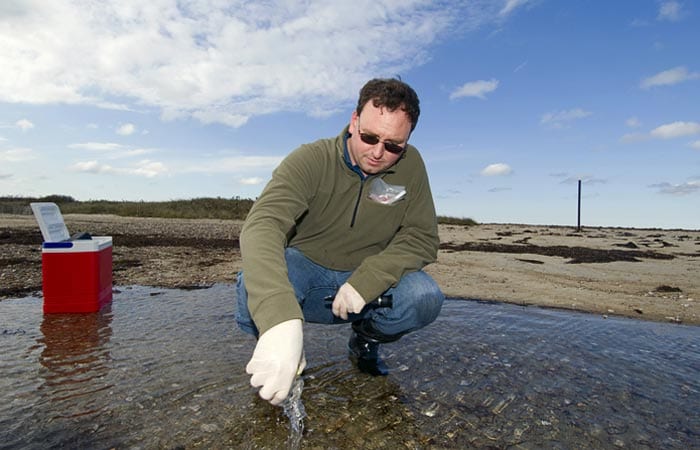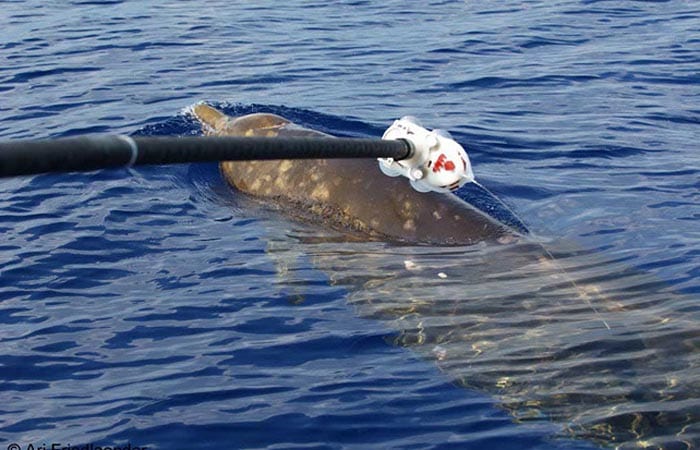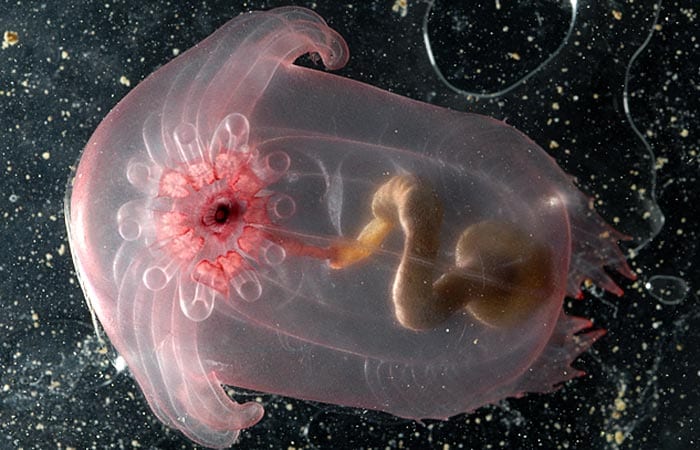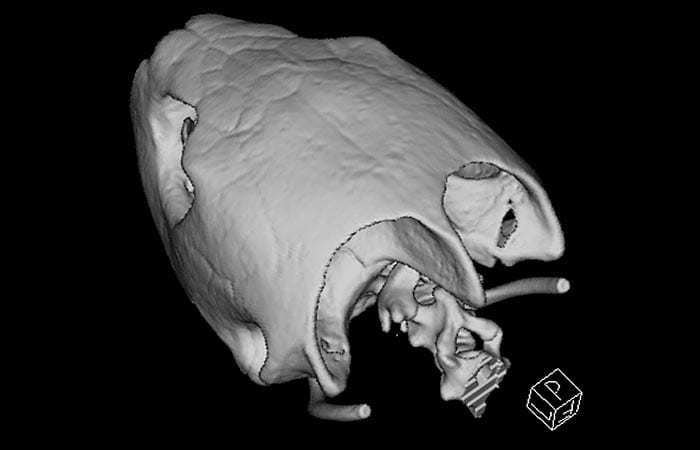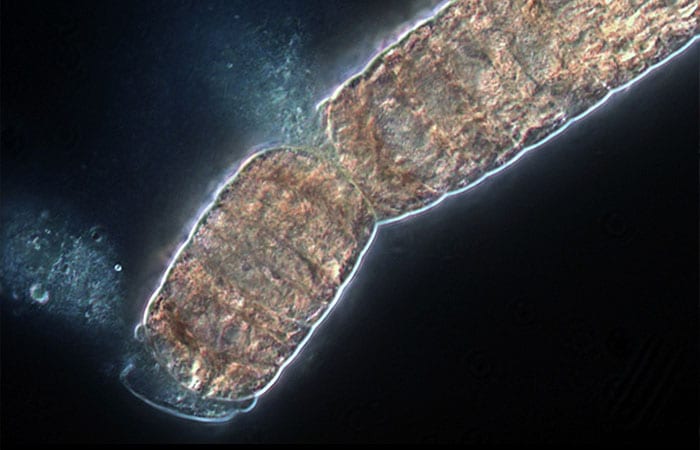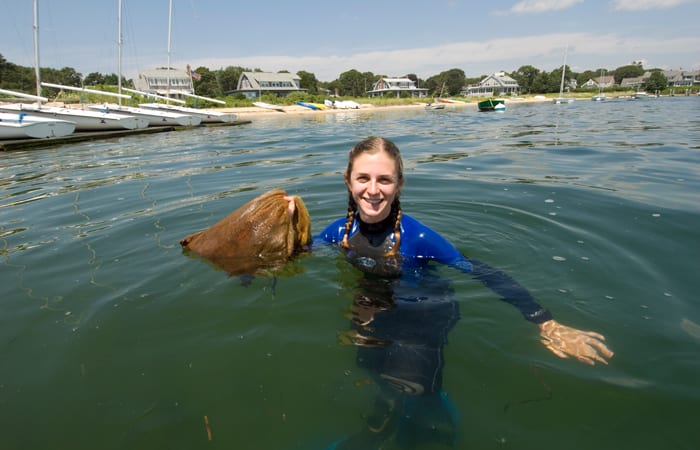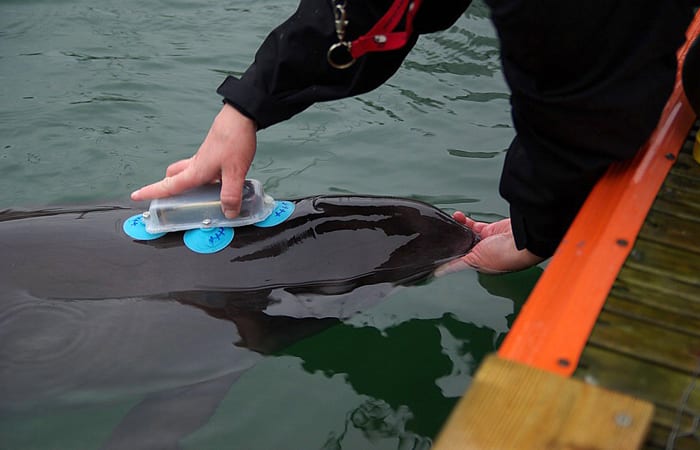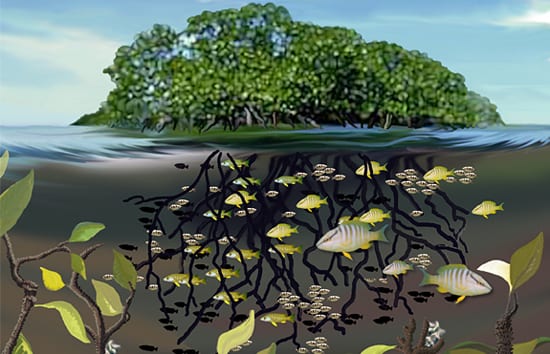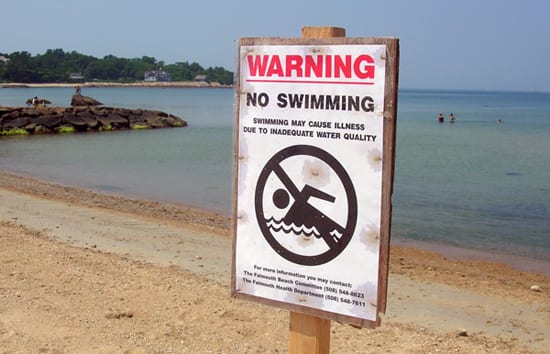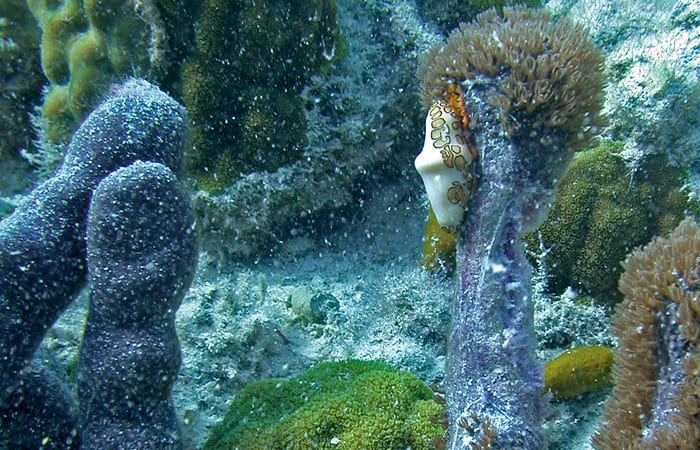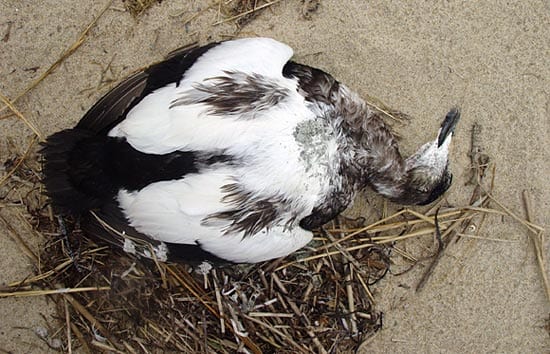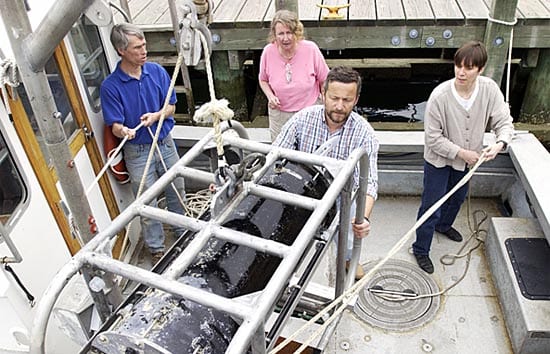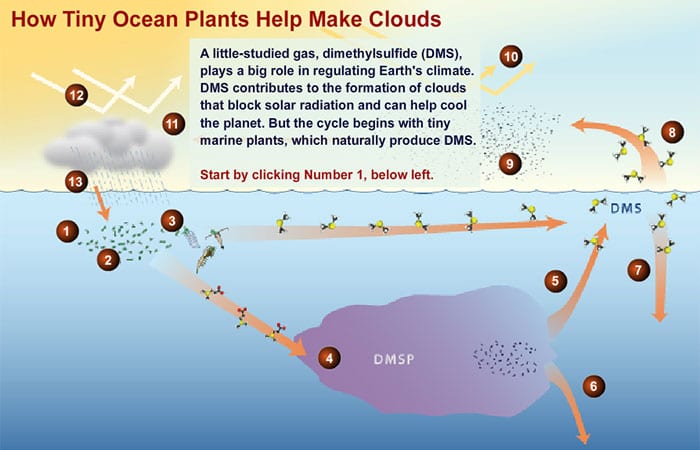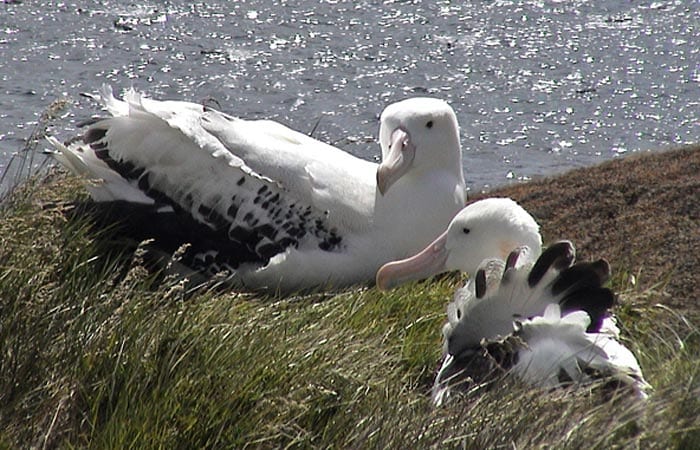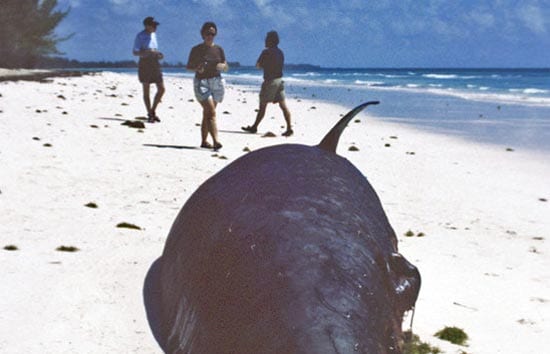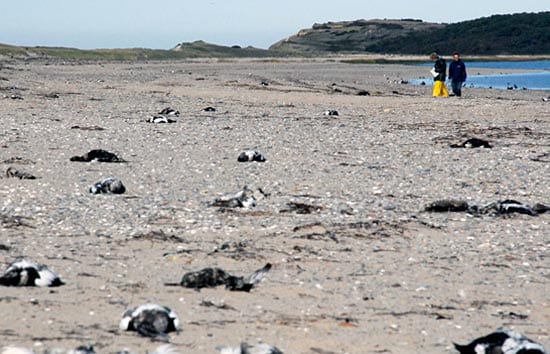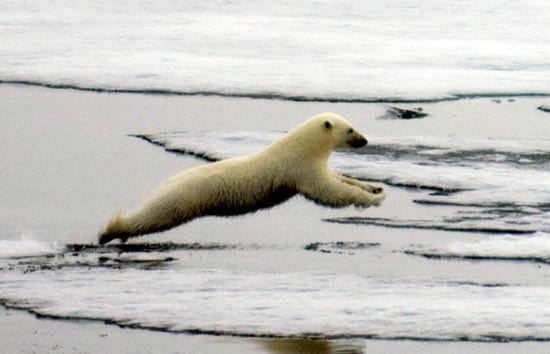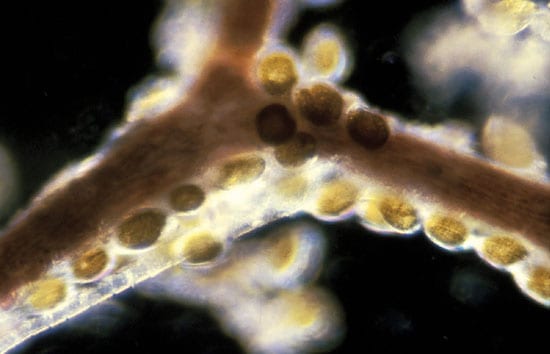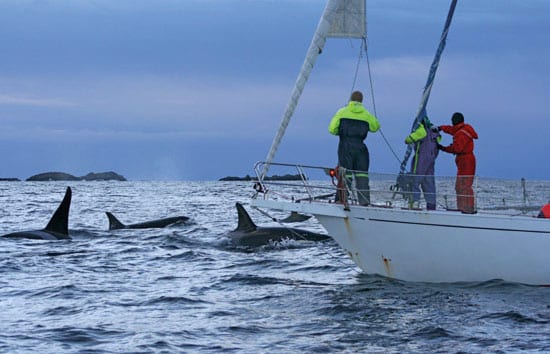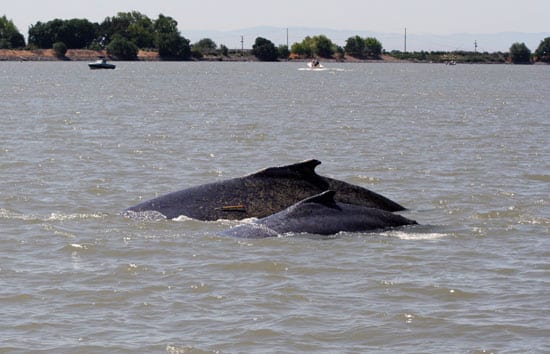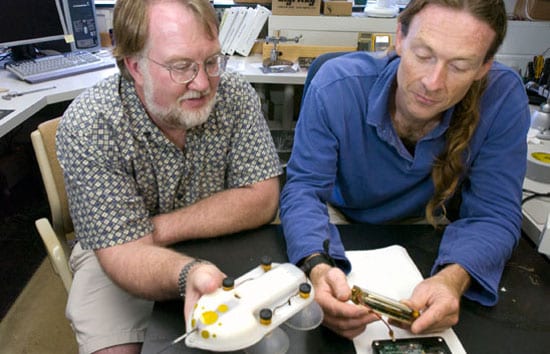Biology
The Hunt for Microbial ‘Trojan Horses’
In summer, Wood Neck Beach in Woods Hole, Mass., teems with tourists, but only a few seagulls kept Matt First company as he walked through the brown-gold marsh grass last…
Read MoreSupreme Court Weighs in on Whales and Sonar
Arguments about the impact of Navy sonar on marine mammals rose to the highest court in the land last fall. But not every issue is best settled in court. One…
Read MoreCreatures of the Celebes Sea
Where the Indian and Pacific Oceans meet lies a region known as the “coral triangle”—a region of thousands of islands encompassing the Philippines, Indonesia, parts of Malaysia. and other nations.…
Read MoreTurtle Skulls Prove to be Shock-Resistant
Scientists and engineers from Woods Hole Oceanographic Institution (WHOI) and the U.S. Navy have discovered that sea turtles’ skulls and shells not only protect them from predators but also from…
Read MoreA Most Ingenious Paradoxical Plankton
Everybody has a unique place in the world, a job to do, a niche to fill. When you are a tiny phytoplankter, your place is in the ocean, and your…
Read MoreShellfish’s Mysterious Pathways to Adulthood
With a cool ocean breeze under a cloudless sky, children weave small sailboats through the channel. Larger boats scurry out of Waquoit Bay to fish in Nantucket Sound or spend…
Read MoreA Tag Fit for a Porpoise
In 2003, Stacy DeRuiter arrived as a graduate student at Woods Hole Oceanographic Institution (WHOI), where a new device developed at WHOI was sparking a revolution in marine mammal research:…
Read MoreOne Man’s Swamp Is a Fish’s Nursery
A parade of schoolmaster snapper swims by me, their neon yellow fins directing traffic. Echoing in the background is the rhythmic crunch of striped parrotfish nibbling on coral polyps. I’m…
Read MoreThe Spiral Secret to Mammal Hearing
The spiral secrets of mammals? hearing abilities Whispering galleries are curious features of circular buildings. As whispers travel along the buildings’ curved walls, they remain loud enough to be heard…
Read MoreTesting the Waters and Closing Beaches
On a warm, tranquil evening this summer, Falmouth resident Annette Hynes took a friend down to Wood Neck Beach. It is one of Annette’s favorite local beaches, with a long,…
Read MoreBiochemical Warfare on the Reef
Just beneath the tranquil, clear waters of the tropical Caribbean, unseen by all but a few keen-eyed divers, two foes have engaged in a life-and-death struggle every day for thousands…
Read MoreSea Life Is Accumulating Pathogens
An unprecedented survey of seabirds, marine mammals, and sharks on the U.S. East Coast has revealed that marine wildlife contains a wide variety of disease-causing microbes—including many that have developed…
Read MoreCytobot Gives Early Red Tide Warning
An automated underwater microscope developed by scientists at Woods Hole Oceanographic Institution (WHOI) detected an unexpected bloom of toxic algae in the Gulf of Mexico in February 2008. The fortunate…
Read MoreDMS: The Climate Gas You’ve Never Heard Of
For generations of mariners, a tangy, almost sweet odor served as a signal that land was nearby. What sailors called “the smell of the shore” had the opposite meaning to…
Read MoreSeabirds Use Their Sense of Smell to Find Food
Until about 40 years ago, people thought birds had no sense of smell. John J. Audubon, the great bird artist and naturalist, had said so in 1826, after conducting experiments…
Read MoreThe Sound of Sonar and the Fury about Whale Strandings
Eight years ago, several U.S. Navy destroyers used sonar in the Bahamas during routine training exercises. Within 36 hours, 17 animals—including 14 beaked whales, one of the world’s deepest-diving whale…
Read MoreScientists Investigate Mysterious Duck Die-offs
Andrea Bogomolni was in a skiff near shore when she saw the ducks in October of 2007: “It was surreal,” the biologist remembered. “You could see hundreds of lifeless brown,…
Read MoreMelting Ice Threatens Polar Bears’ Survival
The Department of Interior’s imminent decision on whether to place polar bears on the federally protected endangered species list has focused attention on a recent study that documents for the…
Read MorePilot Study Examines Ciguatera Fish Poisoning
It is one of the most common illnesses from eating seafood, sickening more than 50,000 people a year, and it is on the rise around the world. Yet most people…
Read MoreEavesdropping on Whales’ Mealtime Conversation
Like a knife slicing through denim, the black dorsal fin broke the surface of the icy water quickly, and then disappeared into the depths. “Off the port bow,” yelled Ari…
Read MoreInnovative Tagging Technique May Help Researchers Better Protect Fish Stocks
Simon Thorrold, a fish ecologist from WHOI, has received a new research grant from the David and Lucile Packard Foundation to use harmless chemical tags to track the dispersal of the larvae of coral reef fishes in the western Pacific Ocean.
Read MoreFollowing Whales Up a Creek
Michael Moore is accustomed to working solo (or nearly so) in remote places, but this was a very public endeavor. The WHOI marine mammal biologist and veterinarian flew across the…
Read MoreThe Deepest Divers
For years, sperm whales and elephant seals were thought to hold world records for holding their breath under water. But those animals have nothing on beaked whales. Using digital tags…
Read MoreExplorers to Use New Robotic Vehicles to Hunt for Life and Hydrothermal Vents on Arctic Seafloor
Researchers will probe the Gakkel Ridge during expedition that begins on July 1.
Read More
